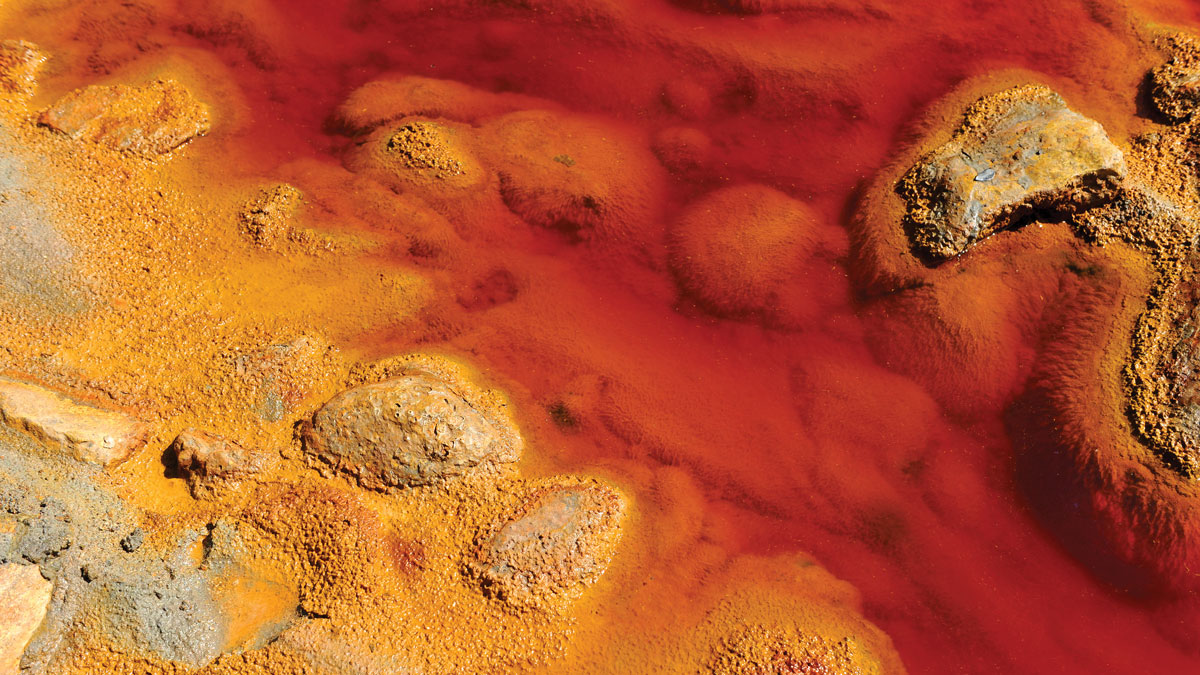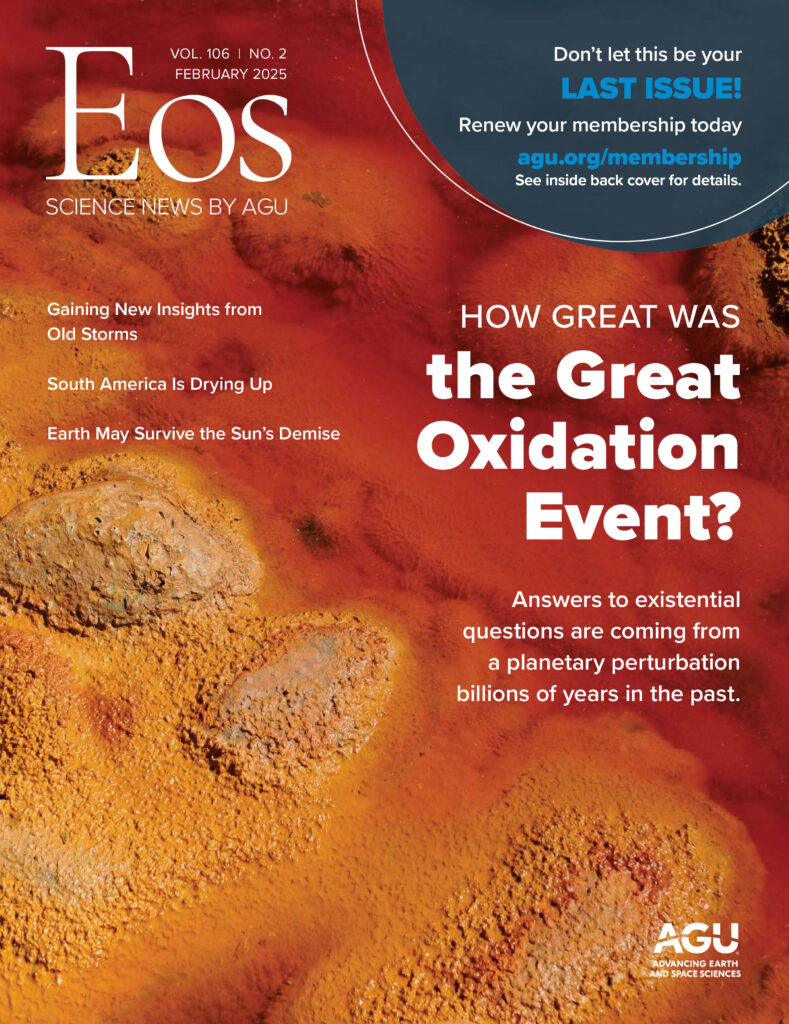The title question posed by our lead story this month has been irresistible to Earth scientists for generations: How great was the Great Oxidation Event?
Author Aubrey Zerkle and other geoscientists searched for an answer by taking a fresh look at the acidic waters of the Rio Tinto in southern Spain. What they found indicates that the Great Oxidation Event provided enough oxygen to the atmosphere for animals to have evolved early in the Proterozoic—nearly 2 billion years before evidence suggests they actually did.
The banded iron formations that largely appeared in the run-up to the Great Oxidation Event provide another clue to solving its mysteries. Learn how “Bacteria Battled for Iron in Earth’s Early Oceans” and how scientists studied how different microbes contributed to iron oxidation in the Archean.
The Great Oxidation Event was certainly a large-scale planetary perturbation, redefining life and geologic patterns around the world. And as discussed through the thought-provoking and contradictory Gaia and Medea hypotheses, “Planetary Perturbations May Strengthen Gaia”—or destroy her. Addressing the complex modeling involved in analyzing such concepts, paleontologist Peter Ward said, “I’m really glad that people are trying to experimentally test some of the most profound questions about life itself.”
Likewise, we are glad geoscientists are investigating the Great Oxidation Event because we think it’s pretty great indeed.
—Caryl-Sue Micalizio, Editor in Chief


